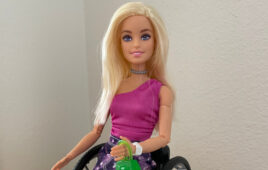In our cover story, we asked veteran clinicians (and a veteran ATP
supplier) how they prioritize positioning goals when Complex Rehab
wheelchair seating is expected to achieve so much (We posed the same question to Raz Design’s Clinical Director, Emma
Friesen, Ph.D. Raz manufactures mobile shower commode chairs,
including chairs for clients with complex positioning needs; how should
a clinician prioritize positioning goals when the seating surface is a
hygiene system instead of a wheelchair?
Priorities Can Change
“As a clinician, I’m talking about seating goals in the same way I would
fit any seating surface,” Friesen said. “I use a diagram that came out
of the New South Wales spinal cord injury unit in Australia. One [area]
is function, and safety is included in that. The second component is
pressure and skin integrity management. The third one is posture and
looking at the physiological issues around posture and supporting the
body. And the fourth one is comfort.
“When I’m training this, I’m using the same explanation in terms of
seating goals. For these goals in different points of our assessment and
with different people and different situations, the priorities are going to
change slightly. In spinal [cord injury] seating, we would say function
is important, but skin integrity is absolutely the most important thing.
For people with larger bodies [such as bariatric clients], safety from a
clinical perspective and an engineering perspective is probably one of
the bigger concerns — not just safety for the person sitting in the chair,
but also for caregivers who are assisting with various activities and
tasks.”
While funding sources sometimes downplay the significance of
comfort in a seating system, Friesen said it’s typically a very important
consideration indeed to the person who’s ultimately spending hours,
days and years on that seating surface.
“As I’ve been doing this more and more years, I’m more and more
believing that comfort — and I take a very broad definition of the word
comfort — is absolutely critical to getting people to be happy to use
the equipment and use it well,” she noted. “When I talk about comfort,
I don’t just mean comfort and discomfort. I also include things like
dignity and their privacy and their individual wants and needs for using
this equipment for independence and having assistance.”

